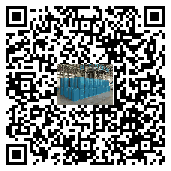Performance is king: the outstanding advantages and application value of printing and dyeing penetrants
Printing and dyeing penetrants have significant advantages in the textile printing and dyeing industry, and can effectively
improve the efficiency and quality of the printing and dyeing process. The main advantages are reflected in the following
aspects:
1. Enhance permeability and improve dyeing effect
Fast penetration: Printing and dyeing penetrants can significantly reduce the tension on the fiber surface, allowing dye
molecules to quickly and evenly penetrate into the fiber, ensuring that the dye is evenly distributed in the fiber to avoid
color spots and color differences.
Increase color yield: penetrants enhance the fiber's ability to absorb dyes, making the fabric color more vivid and full, and
significantly improving the depth and fastness of dyeing.
2. Optimize dyeing process and improve efficiency
Shorten wetting time: penetrants can quickly wet the fabric surface and reduce wetting time, thereby shortening the entire
dyeing cycle and improving production efficiency.
Reduce energy consumption: By optimizing the distribution of dyes in fibers, penetrants reduce energy consumption in
the dyeing process and reduce production costs.
3. Improve the feel and performance of fabrics
Give fabrics softness: Penetrants can give fabrics a soft and plump feel during the dyeing process, improving the comfort
and quality of fabrics.
Enhance dimensional stability: Penetrants help improve the dimensional stability of fabrics, reduce the shrinkage of fabrics
after dyeing, and make fabrics easier to process and use.
4. Reduce stains and foam, and improve printing and dyeing quality
Reduce surface tension: Penetrants can reduce the surface tension of printing and dyeing liquids, reduce the generation of
foam, and avoid uneven dyeing and color spots caused by foam.
Reduce stain adhesion: Penetrants help keep the printing and dyeing liquid clean, reduce the adhesion of stains on fabrics,
and improve the overall quality of printed and dyed products.
5. Strong adaptability and wide application
Applicable to a variety of fibers: Printing and dyeing penetrants have good permeability to a variety of fiber materials such
as cotton, linen, viscose and its blended products, and have a wide range of applications.
Compatible with a variety of processes: Penetrants can be used in conjunction with a variety of printing and dyeing auxiliaries,
suitable for various dyeing and post-processing processes, to meet different production needs.
6. Environmental protection and economy
Environmental protection performance: Some penetrants have good biodegradability, reduce pollution to the environment,
and meet environmental protection requirements.
Cost-effectiveness: The price of penetrants is relatively low, and they can significantly improve dyeing effects and production
efficiency, with high cost performance.
7. Improve fabric whiteness and water absorption
Improve whiteness: penetrants can remove impurities and grease on the surface of fabrics, give fabrics a higher whiteness,
and make the color after dyeing purer.
Enhance water absorption: penetrants improve the water absorption of fabrics, making fabrics easier to handle in subsequent
processing.
8. Strong alkali resistance and good stability
Strong alkali resistance: Some penetrants (such as alkali-resistant penetrants) can remain stable under strong alkaline conditions,
and are suitable for strong alkali processes such as bleaching and desizing to ensure the smooth progress of the dyeing process.
Good stability: penetrants can maintain good permeability and stability under various process conditions to ensure the
consistency of dyeing effects.


